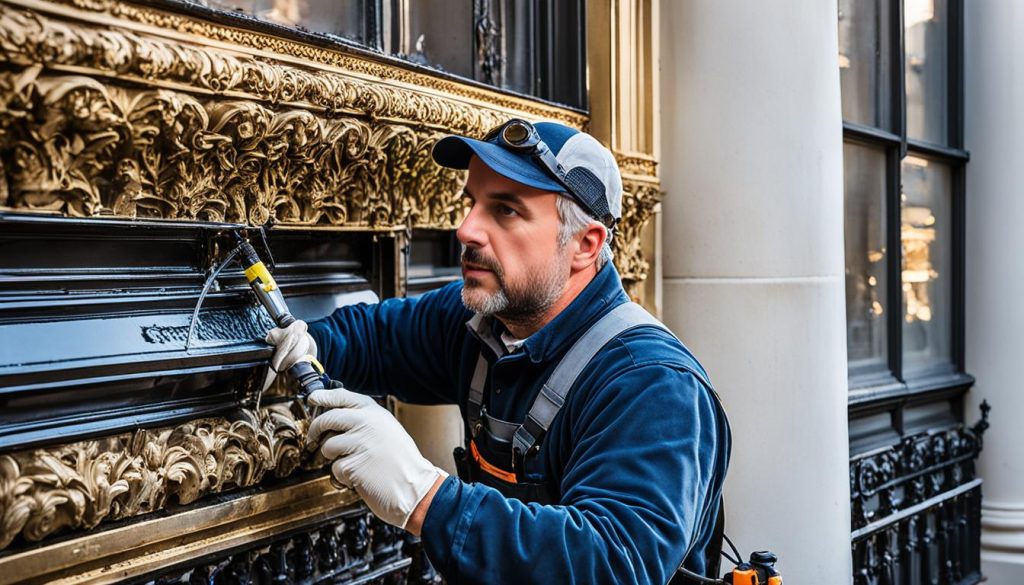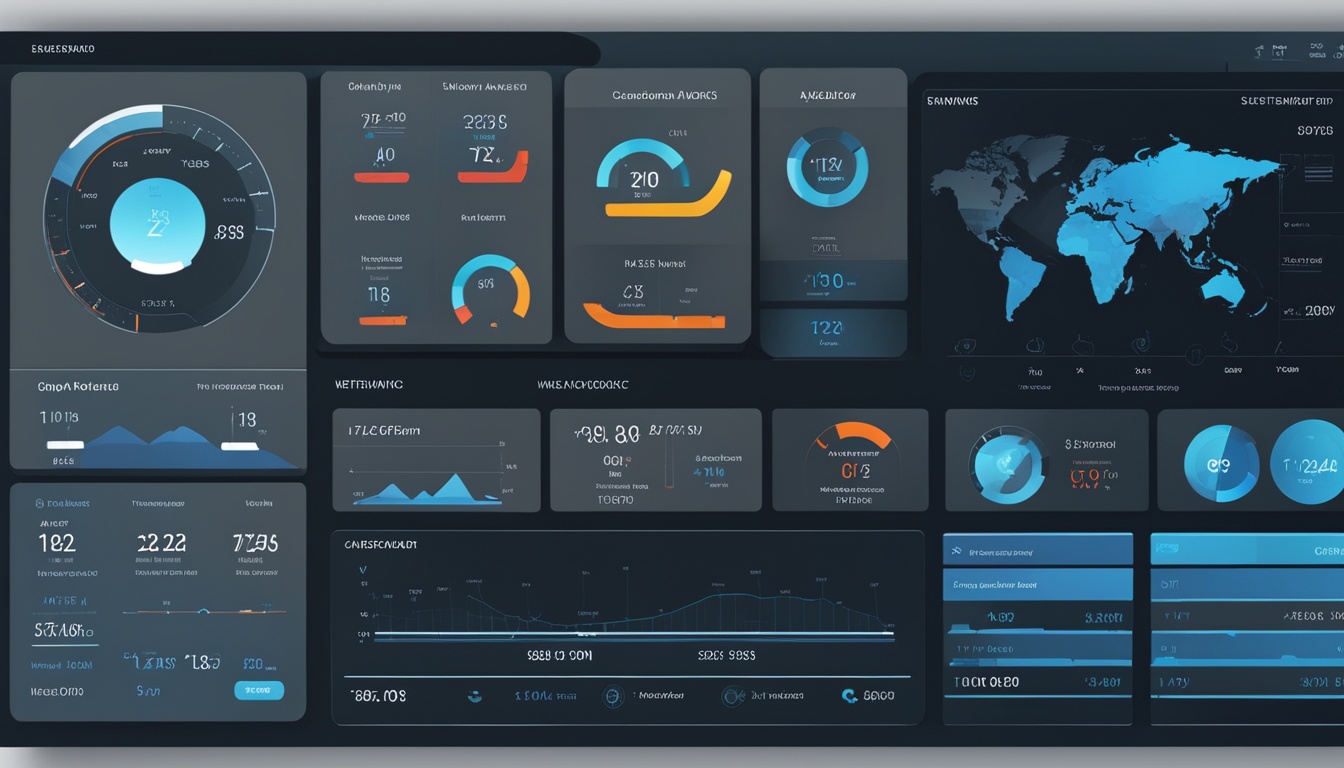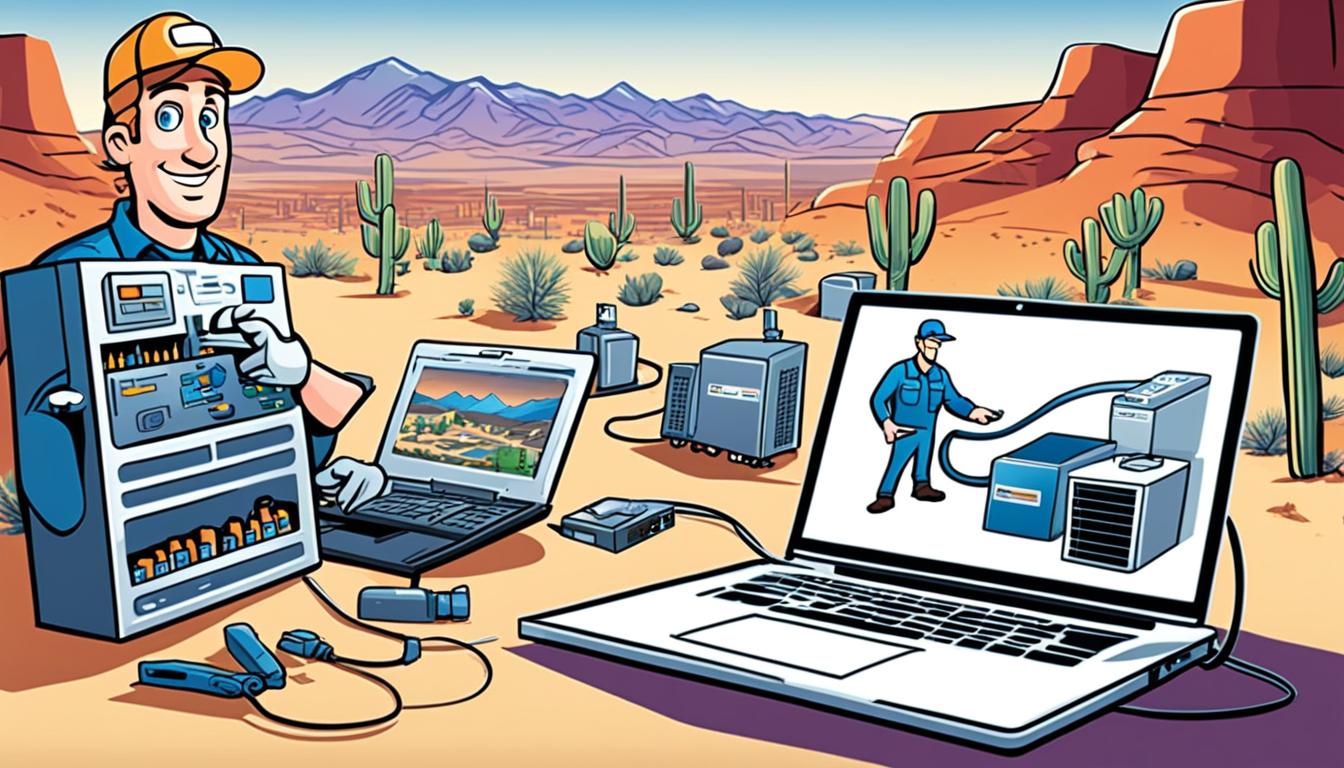Vent cleaning is an essential task in older and historic buildings to ensure proper airflow and maintain indoor air quality. In these buildings, the ductwork is often more complex and may require special attention. Regular vent cleaning helps prevent issues such as debris build-up, critters, and allergens. It is necessary for both older homes and newly constructed or renovated buildings.
A professional inspection is the first step, followed by negative pressure and debris removal using specialized equipment such as ductwork brushes, extension tubes, compressed air equipment, and truck-powered vacuum. Cleaning the entire system thoroughly, including air filters, is crucial for maintaining a clean and healthy environment. The frequency of vent cleaning depends on factors such as the number of occupants, the style and construction of the vent, and any specific issues or concerns identified during the inspection.
Key Takeaways:
- Regular vent cleaning is crucial for maintaining airflow and indoor air quality in older or historic buildings.
- A professional inspection is necessary to identify specific issues and concerns before cleaning the vents.
- Specialized equipment, such as ductwork brushes and truck-powered vacuums, is used for thorough cleaning.
- The frequency of vent cleaning depends on factors such as occupancy and vent construction.
- Cleaning the entire vent system, including air filters, is important for a clean and healthy environment.
Signs that indicate the need for vent cleaning in older or historic buildings
In older or historic buildings, proper vent cleaning is crucial for maintaining indoor air quality and ensuring the efficient operation of the HVAC system. There are several signs you should be aware of that indicate the need for vent cleaning:
- Spiking energy bills: If you notice a sudden increase in your energy bills without any clear explanation, it could be a sign that your vents are dirty or blocked. A dirty vent restricts airflow and causes your HVAC system to work harder, leading to higher energy consumption.
- Dust and debris around vents: The presence of dust or debris around the vents and registers is another indication that your vents need cleaning. This buildup of contaminants can adversely affect indoor air quality, leading to respiratory issues and allergies.
- Mold growth near vents: If you notice mold growth near the vent registers, it is crucial to schedule a vent cleaning. Mold not only compromises indoor air quality but also poses a health risk. Regular vent cleaning helps prevent the buildup of mold and other harmful bacteria.
- Recent renovations or lack of prior cleaning: If your building has undergone a major renovation recently or there is no record of prior duct cleaning, it is advisable to schedule a professional vent cleaning. Accumulated debris from the construction or years of neglect can obstruct airflow and impact the overall efficiency of your HVAC system.
By keeping an eye out for these signs, you can address any vent cleaning needs promptly and ensure a clean and healthy environment in your older or historic building.
| Signs of Vent Cleaning Needs | Description |
|---|---|
| Spiking energy bills | A sudden increase in energy bills without a clear explanation could be caused by dirty or blocked vents, leading to inefficient HVAC system operation. |
| Dust and debris around vents | The presence of dust or debris around the vents and registers suggests a buildup of contaminants that can affect indoor air quality and trigger respiratory issues. |
| Mold growth near vents | Mold growth near vent registers indicates the need for vent cleaning as mold can pose a health risk and compromise indoor air quality. |
| Recent renovations or lack of prior cleaning | If your building has undergone a major renovation or there is no record of prior duct cleaning, it is essential to schedule a vent cleaning to remove accumulated debris and ensure proper airflow. |
The process of cleaning dryer vents in older or historic buildings

Cleaning dryer vents in older or historic buildings is crucial for maintaining proper ventilation and preventing potential fire hazards. The complexity of these building structures requires a careful approach to vent cleaning. Here’s a step-by-step breakdown of the process:
1. Inspection and Hi-Temp Test
Prior to cleaning the vents, a thorough inspection is conducted to assess if the system is blocked or in need of maintenance. A hi-temp test is performed to evaluate the airflow and identify potential fire risks.
2. Equipment and Safety Gear
To effectively remove lint and debris, specialized equipment is utilized. This includes vent cleaning rods, brushes, and a heavy-duty cordless drill. Moreover, appropriate safety gear such as gloves and masks must be worn to ensure protection.
3. Removing Lint and Debris
The vent system is cleaned section by section using the vent cleaning rods and brushes. For roof-top vents, the rivets on the roof cap may need to be drilled out, allowing for easy access. After cleaning three feet of the vent, the brush is pulled out to let dislodged lint escape.
4. Addressing Additional Issues
During the cleaning process, other issues such as bird’s nests, screen mesh, or check valves may be discovered. These issues should be addressed and resolved to ensure optimal vent performance.
5. Cleaning Frequency
The frequency of cleaning dryer vents depends on various factors, including the number of occupants and the type of vent. PVC vents typically require more frequent cleaning. Regular maintenance is essential to prevent lint buildup, maintain proper airflow, and reduce the risk of dryer fires.
The benefits and cost savings of regular vent cleaning in older or historic buildings
Regular vent cleaning in older or historic buildings offers numerous benefits and cost savings. One of the key advantages is the improvement in indoor air quality. By cleaning the vents, you can prevent the build-up of biological pollutants such as mold and bacteria, which can have adverse health effects on occupants. This is particularly crucial in historic buildings where proper ventilation is essential for maintaining a healthy environment.
In addition to improving indoor air quality, regular vent cleaning also reduces energy costs. Clean vents ensure that the HVAC system operates efficiently, resulting in reduced energy consumption. This translates to lower utility bills and significant cost savings in the long run.
Furthermore, investing in regular vent cleaning can increase employee efficiency and retention. Clean vents provide a comfortable and safe working environment, which has a positive impact on employee productivity. When employees feel that their health and well-being are prioritized, they are more likely to be satisfied with their workplace and stay for the long term.
Lastly, regular vent cleaning helps maintain the overall condition and value of historic buildings. By ensuring that the vents are clean and in proper working condition, you can prolong the lifespan of the HVAC system and minimize equipment maintenance costs. This is crucial for preserving the integrity of the building and safeguarding its historical significance.





0 Comments